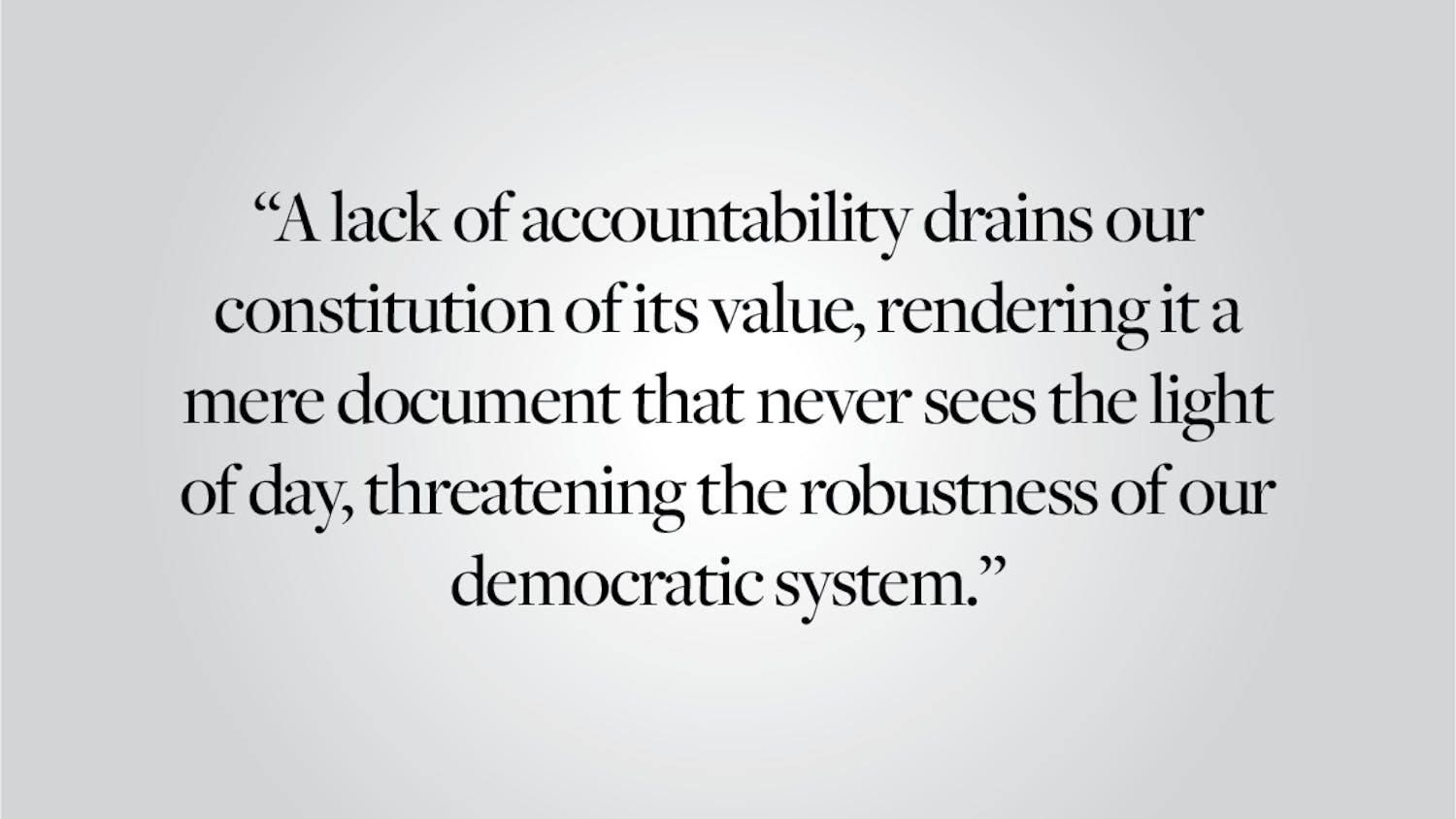Student debt is an epidemic that shows no signs of stopping. Past generations were once able to pay off their debts within a few years of graduation. But such a thing is unfathomable now. Students in the United States today suffer from over $1.2 trillion of debt. Brown is not an exception to this trend: In 2015, Brown students — with $21,697 of average debt per student — had the heaviest burden in the Ivy League, but we are still a far cry from the national average of $29,000.
So what’s being done? Not much, it seems. The federal government, ever at the mercy of politics and inefficiency, has failed to make comprehensive reforms regarding accumulating student debt. Small-scale reforms have been made under the Obama administration, including reducing the time requirements for debt forgiveness from 25 years to 20 years and reducing loan payments to a maximum of 10 percent of income. But these reforms have not curbed the ever-increasing tide of student debt.
Larger attempts at reform have all failed. In 2014, U.S. Sen. Elizabeth Warren, D-Mass., spearheaded a bill that would allow people to refinance their debt at lower interest rates, but even this conservative proposal was rejected because of its call for a small tax increase on the wealthy. Partisan politics make the process even more cumbersome, with bills often needing to overcome filibusters from hard-set politicians determined to deprive the other party of a political victory. Democratic presidential nominee Hillary Clinton and Republican presidential nominee Donald Trump have taken varying stances on student debt reform, though they are aligned in their call for speedy action. Clinton’s plan incorporates Warren’s push for refinancing loans, while Trump has emphasized that he does not want the government to profit off of student loans. But if precedent is anything to go by, it’s highly unlikely that these proposals will be able to provide a lasting solution.
For students suffering from the burden of debt today, federal reform is not the answer. Sure, we may finally earn a political victory in 50 years or so. But we cannot afford to wait for the political machine to crawl its way forward. This generation can create its own change separate from the political process.
The first thing we can do is educate ourselves. Increasing financial literacy has had some impressive effects in Indiana after the state mandated all colleges accepting state aid send out monthly student debt letters that inform students about their total debt and monthly payments. This policy change has reduced borrowing at Indiana University by 18 percent. The Brown Financial Aid Office could take similar steps to better inform students of their debt, whether through a periodic letter or more information sessions. Students should also use resources already available online, such as StudentAid.ed.gov and the Loan Repayment Calculator on the Brown Financial Aid portal. These reminders can be especially effective at keeping debt responsibilities at the forefront of students’ minds.
When students are well informed about their debt, they are better positioned to decide for themselves whether to take a part-time job or take out more loans. Working in addition to college can be difficult, but studies have found that students who work under 20 hours per week report higher grades than students who don’t work at all. Some jobs available to students at Brown, like working at the Stephen Roberts ’62 Campus Center front desk, are not overly work intensive, giving students time to study on the job. Debt accumulates over time, so reducing the amount students borrow can have long-lasting implications.
Even after graduation, there are ways we can manage student debt by taking advantage of existing tools on the market. An increasing number of companies are now offering jobs that pay back a set amount of student loans. For example, Pricewaterhouse Coopers has a plan that includes payments of $1,200 a year to your loan for up to six years. These options are a fantastic way to pay off student debt faster, but many students at Brown and other elite institutions are unaware of their existence. Fortunately for us, there are many startups that exist to connect students to these opportunities. The startup Gradifi works with more than 100 companies to create more of these student loan repayment programs. Another startup, Future Fuel, provides an online networking platform that matches students with companies that have debt repayment programs. There are many similar tools out there, and it is important that we learn about these resources to keep debt from controlling us.
Student debt will continue to be a problem, but there are many ways we can alleviate the burden. Ideally, more solutions will be developed that can help reduce debt today and obviate the wait for the political machine to run its course. But in the meantime, there is always something we can do to work toward achieving a debt-free future.
Elliot Kang ’20 is a student consultant with the Collegiate Consulting Group at Brown and is currently working with Future Fuel. He can be reached at elliot_kang@brown.edu. Pleases end responses to this opinion to letters@browndailyherald.com and other op-eds to opinions@browndailyherald.com.




